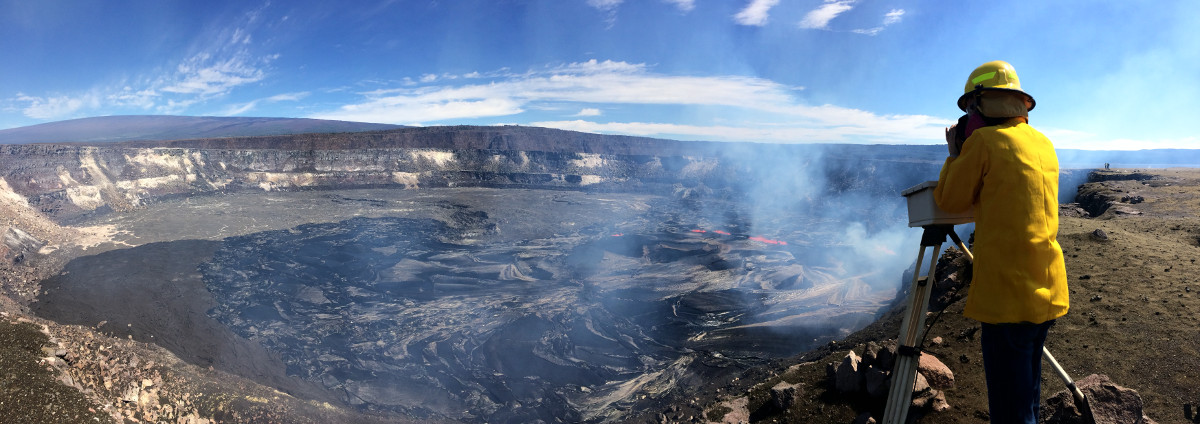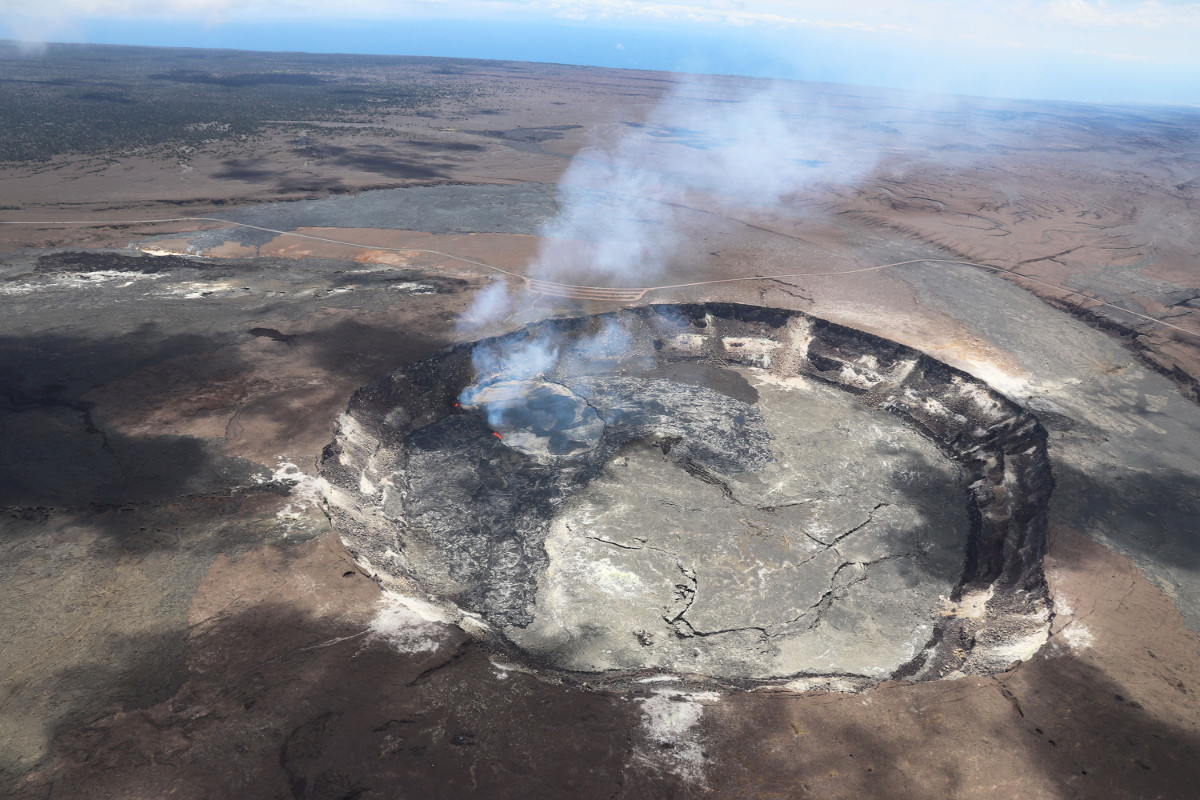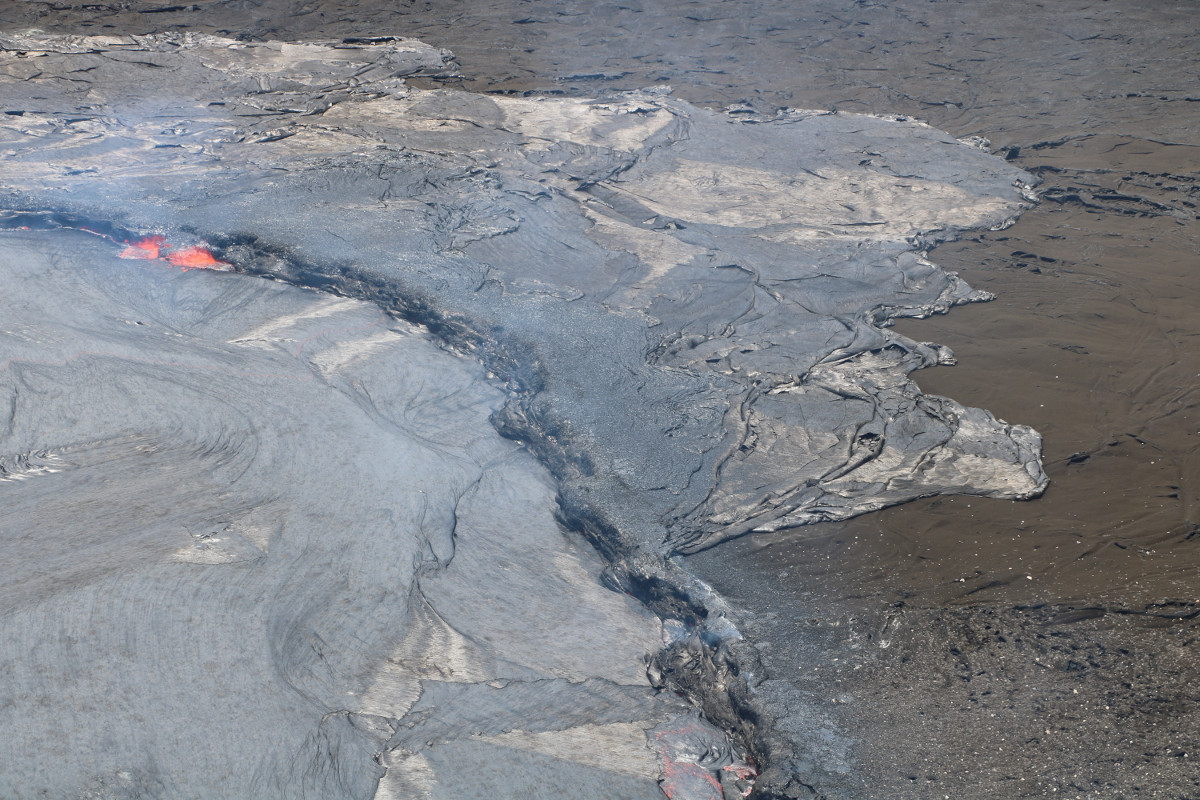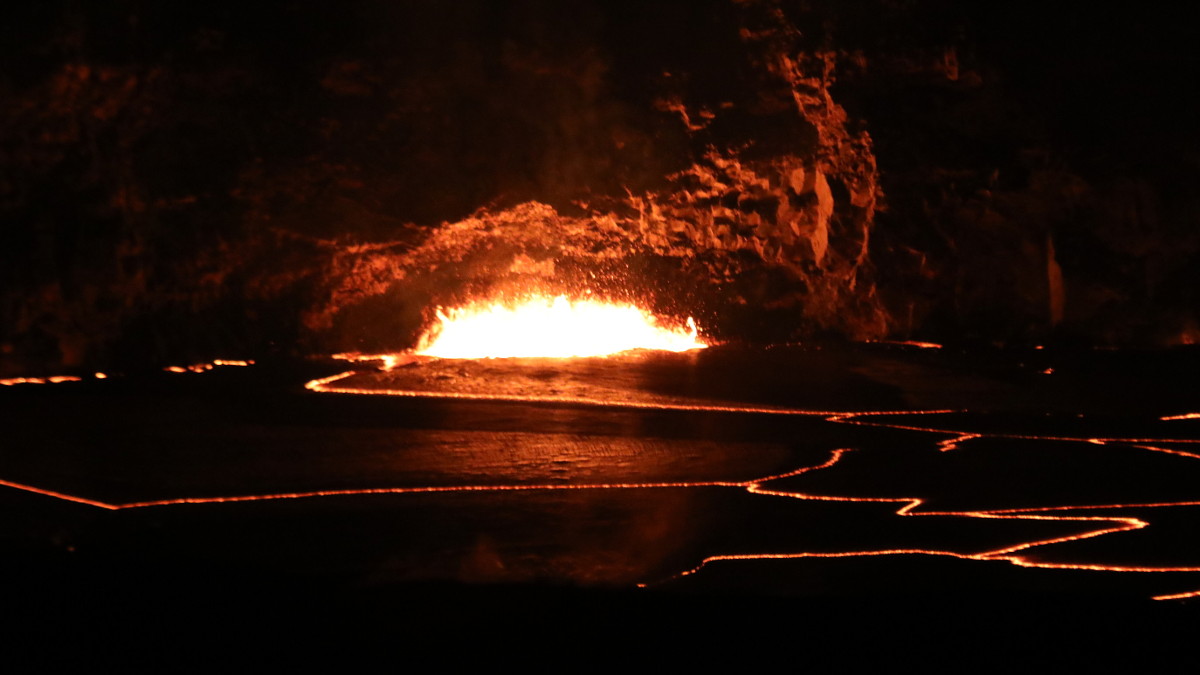
(USGS) Early this morning, HVO geologists (shown here) used a laser range-finder to measure the depth to the lava lake surface at its peak level. The silhouettes of HVO and Hawai‘i Volcanoes National Park’s Jaggar Museum are visible on the rim of Kīlauea’s summit caldera (center high point). Mauna Loa can be seen in the far distance (left).
(BIVN) – The spectacle of an overflowing volcano lava lake returned to the summit of Kīlauea overnight, and by Monday scientists were busy taking measurements and capturing the aftermath from all angles.
According to the USGS Hawaiian Volcano Observatory:
Beginning around midnight on Saturday, April 21, Kīlauea Volcano’s summit lava lake rose high enough that lava briefly spilled onto the floor of Halema‘uma‘u. Since then, additional overflows occurred in four pulses on April 22–23. The largest one occurred during the fourth pulse, which started at 6:30 a.m. today (Monday, April 23) and continued for about three hours, covering about a third of the crater floor with shiny black lava.
The scientists also took the air over the caldera.

(USGS) A helicopter overflight this afternoon (April 23) of Kīlauea Volcano’s Halema‘uma‘u crater showed the extent of the largest overflow (silver gray) of the lava lake, which occurred from approximately 6:30 a.m. to 9:30 a.m. this morning.
The USGS says the overflow covered much of the April/May 2015 and October 2016 overflows, “but a section of the 2015 overflow is still visible on the south (upper edge) of the Halema‘uma‘u crater floor.”
At the time of the helicopter overflight, “multiple spattering sites were active around the margin of the summit lava lake, and the lake surface had dropped to a few meters (yards) below the vent rim.”
The lower lake level reflected the switch from inflation to deflation at the summit of Kīlauea, scientists said.
The area around Halema‘uma‘u remains closed to the public due to ongoing volcanic hazards, officials say, including high sulfur dioxide gas emissions and unexpected rockfalls and explosions.

(USGS) A look at the small overflows onto the floor of Halema‘uma‘u Crater that occurred Saturday night. This photo shows the largest overflow from that first night, on the north margin, which reached about 80 m (262 feet) from the lake margin. The next night the spillover was bigger.


by Big Island Video News6:44 pm
on at
STORY SUMMARY
HAWAII VOLCANOES NATIONAL PARK - For the first time since October 2016, the lava lake at the summit of Kilauea volcano spilled out onto the floor of Halema‘uma‘u crater.